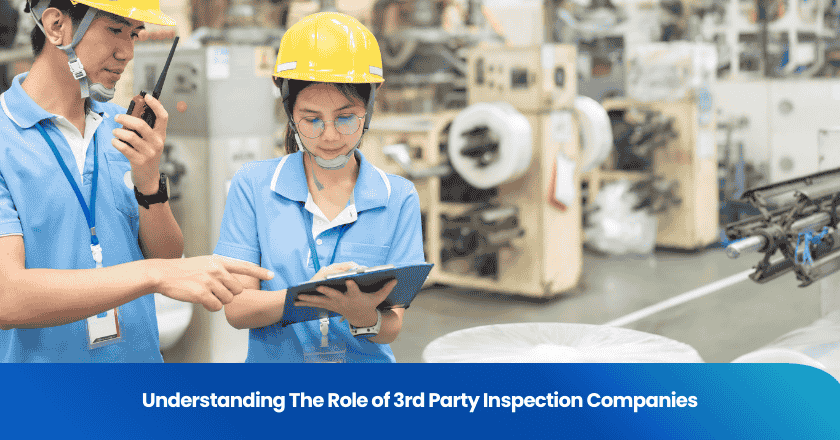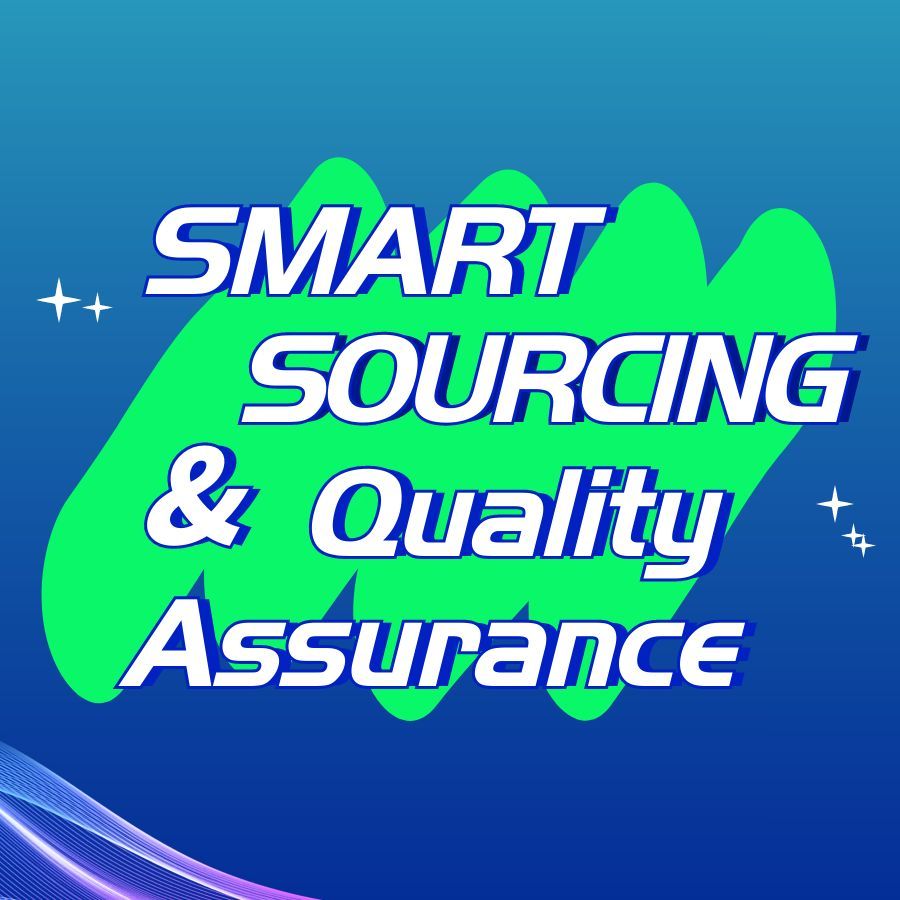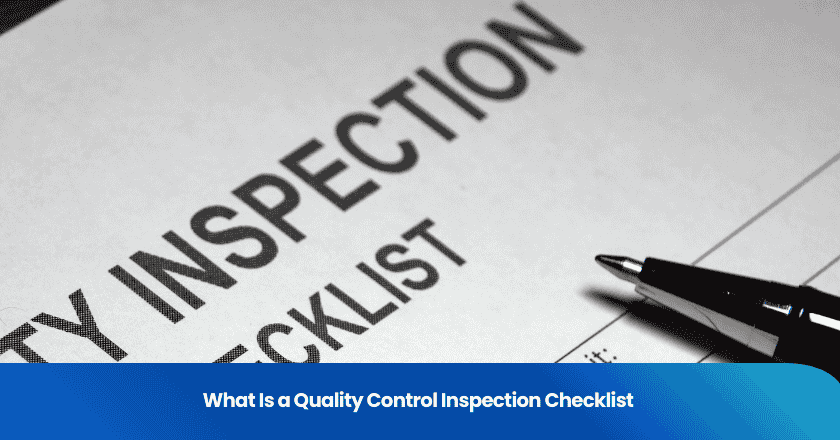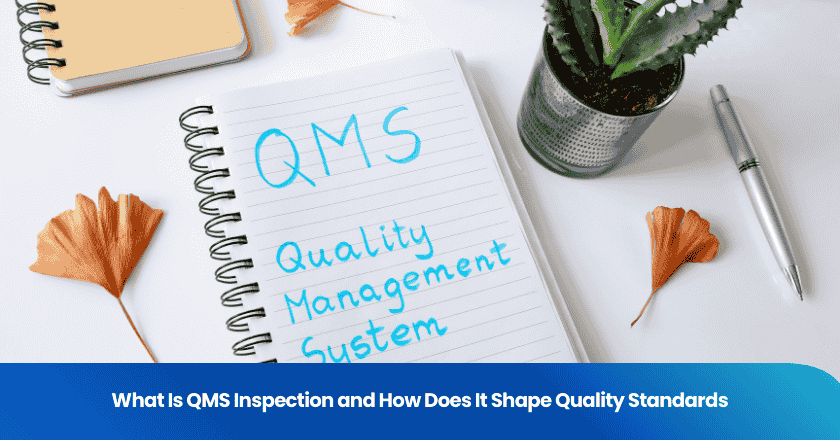
A third party inspection company conducts reliable inspections to assess product quality and ensure quality control within your supply chain. Independent evaluations from 3rd party inspection companies play a vital role in maintaining unbiased standards across international markets. You benefit from these services in several ways:
- Inspections verify that products meet industry standards and regulatory requirements.
- Third party inspection helps reduce risks related to defects, non-compliance, and safety issues.
- Reliable inspections enhance consumer trust and protect your brand reputation.
By choosing independent inspection, you gain confidence in your supply chain and maintain consistent product quality.
What Are 3rd Party Inspection Companies?
Definition and Main Functions
You rely on 3rd party inspection companies to provide independent oversight throughout your supply chain. These organizations specialize in third party inspection, offering a range of services that help you maintain product quality and meet regulatory standards. Their main functions include conducting inspections at different stages of production, verifying compliance, and identifying potential risks before products reach customers.
Third party inspection plays a crucial role in manufacturing and supply chains. You benefit from early problem identification, which helps you avoid costly rework and recalls. These inspections reduce supply chain risks by assessing supplier methods and materials. You also gain access to expert knowledge and advanced technology, which supports your efforts to compete in the global market.
Tip: Early engagement with third party inspection can save you time and resources by catching issues before they escalate.
The following table summarizes the types of inspection services you may encounter:
| Type of Inspection | Description |
|---|---|
| Pre-Production Inspections | Focus on materials and components to ensure they meet specifications before production begins. |
| During Production Inspections | Occur while manufacturing is underway to check the production process and ensure quality standards. |
| Pre-Shipment Inspections | Assess finished goods to confirm they meet specifications before leaving the factory. |
| Container Loading Inspections | Ensure products are safely and correctly loaded for shipment. |
| Factory Audits and Social Checks | Evaluate operational capabilities and ethical practices of suppliers. |
You use third party inspection to establish customer trust and assurance by complying with quality standards. These inspections help you resolve quality issues early, improve customer satisfaction, and enhance your reputation in the market.
Independent Quality Assessment
Third party inspection provides you with an unbiased evaluation of your products and processes. Unlike internal audits, which your own staff conducts, independent quality assessments come from external experts. This distinction ensures objectivity and transparency in your quality control efforts.
The table below highlights the differences between internal and external audits:
| Aspect | Internal Audits | External Audits |
|---|---|---|
| Conducted by | In-house QA staff or trained personnel | Independent parties (regulators, clients, consultants) |
| Purpose | Self-testing and internal process improvement | Compliance verification and certification |
| Results | Corrective measures for daily operations | Authoritative results influencing licenses and contracts |
| Environment | Lower-pressure, supportive of learning | Higher pressure, focused on compliance |
You depend on third party inspection to verify that products meet industry standards and perform as intended. Manufacturers use these assessments to minimize liability concerns. Distributors rely on inspections to maintain customer trust. Designers and architects confirm manufacturer claims for better project outcomes. Consultants analyze reliable data to investigate product or installation failures. Installers access validated information to reduce errors. Homeowners and end users gain confidence that products meet safety and performance expectations.
- Inspections ensure your products meet expected quality and performance standards.
- Third party inspection supports your compliance with regulations and industry benchmarks.
- You strengthen your supply chain by relying on objective, expert assessments.
By choosing 3rd party inspection companies, you take proactive steps to safeguard your business, improve product reliability, and build lasting trust with your customers.
Learn more: What Makes Third Party Inspection Services Different from Other Quality Checks
Why Choose a Third Party Inspection Agency?
Risk Reduction and Compliance
You face many risks in global supply chains. Third party inspection agencies help you identify and address these risks before they impact your business. Inspections provide a layer of protection against disruptions, unethical practices, and compliance failures. You gain confidence that your products meet manufacturing standards and regulatory requirements.
Inspections from third party inspection agencies offer independent evaluations that ensure your operations and equipment meet strict regulatory standards. These agencies help you standardize compliance with standards across different regions. You benefit from consistent adherence to international regulations such as ISO, ASME, or API. This consistency simplifies audits and supports cross-border partnerships. You also rely on these agencies to evaluate contractors and vendors, ensuring all suppliers meet necessary performance and safety criteria. Advanced technology, including cloud-based software and real-time monitoring, enhances the accuracy and transparency of inspections.
You can see how third party inspection agencies help mitigate common risks in global supply chains:
| Historical Failure | Key Risk Identified | Mitigation Strategy |
|---|---|---|
| Logistical Missteps | Disruption in supply flow | Improved logistics planning |
| Unethical Practices | Damage to reputation | Supplier audits and ethical sourcing |
You also encounter risks such as over-reliance on suppliers from unstable regions, increased vulnerability to geopolitical tensions, and the necessity for enhanced visibility and collaboration. Third party inspection agencies help you address these challenges by:
1. Ensuring full visibility of supply chain activities
2. Implementing end-to-end tracking and real-time monitoring
3. Conducting regular product inspections and supplier audits
Inspections reduce the likelihood of defects, non-compliance, and safety issues. You protect your brand reputation and maintain customer trust. Third party inspection agencies support your efforts to meet manufacturing standards and achieve compliance with standards, which is essential for long-term success.
Standardizing Quality Assurance
You need consistent quality assurance across all suppliers and production sites. Third party inspection agencies provide unbiased evaluations that adhere to established standards. Their processes ensure transparency, reliability, and accountability in every inspection.
- Inspections verify product quality and reduce risks of recalls.
- You demonstrate your commitment to excellence through regular third party inspection.
- Agencies provide standardized reporting and detailed feedback for quick corrections.
- You enhance transparency and strengthen customer confidence.
Third party inspection agencies help you maintain high manufacturing standards and improve quality control. You benefit from impartial evaluation of product quality and compliance. Inspections provide historical audit trails, which support faster compliance and simplify regulatory reviews.
The measurable benefits of standardized quality assurance include:
| Benefit Type | Description |
|---|---|
| Improved Products | Ensures high standards, reduces defects, and enhances customer satisfaction. |
| Operational Efficiency | Reduces variability, cuts time and costs, and improves process control. |
| Compliance | Ensures quality standards are met and provides historical audit trails for faster compliance. |
| Risk Management | Provides visibility into quality processes and enables faster issue resolution. |
You rely on third party inspection to ensure impartial evaluation and standardized quality assurance. Inspections help you maintain consistent product quality, reduce operational risks, and improve customer satisfaction. Third party inspection agencies play a vital role in supporting your supply chain and strengthening your reputation in the market.

Types of Third-Party Inspection Services
Pre-Production Inspection
You start your quality journey with pre-production inspection. This service ensures your factory has the correct materials and equipment before production begins. It verifies that your team understands product specifications and requirements. Early intervention helps you identify and address potential issues, preventing costly rework and delays.
- Ensures factories have the right materials and equipment.
- Verifies understanding of product specifications.
- Identifies and addresses issues before mass production.
By using pre-production inspection, you set a strong foundation for your supply chain and reduce risks from the start.
In-Process Inspection
You rely on in-process inspection to monitor production at critical stages. Continuous evaluation helps you catch deviations from specifications early. Fixing errors during production is easier and less expensive than correcting them at the end. In-process inspections support better decision-making and improve production efficiency.
- Early detection of defects keeps production on track.
- Fixing issues during production saves time and materials.
- Regular checks maintain quality standards throughout manufacturing.
This type of inspection helps you maintain manufacturing standards and ensures consistent product quality.
Pre-Shipment Inspection
Before your products leave the factory, you use pre-shipment inspection to confirm they meet all requirements. This step protects your interests and ensures smooth delivery.
| Objective | Description |
|---|---|
| Quality Assurance | Ensures that products meet the required quality standards before shipment. |
| Compliance | Verifies that goods comply with relevant regulations and specifications. |
| Risk Management | Identifies potential issues that could lead to disputes or delays, protecting the buyer's interests. |
| Preventing Disputes and Delays | Helps avoid costly disputes by ensuring products match agreed specifications before shipment. |
| Comprehensive Reporting | Provides detailed reports that can be used for customs clearance and dispute resolution. |
| Flexibility in Inspection Location | Allows inspections to be conducted at various points in the supply chain for convenience. |
| Safeguarding Brand Reputation | Reinforces customer trust through a structured inspection process. |
Pre-shipment inspection gives you confidence that your products will reach customers as promised.
Audits and Special Assessments
You use audits and special assessments to address regulatory or client-specific requirements. These inspections evaluate compliance with industry regulations, internal standards, and external guidelines. Audits can be tailored to your company’s objectives and focus on areas of concern.
You also benefit from auditing outsourced processes, which helps you measure risk transferred to third parties and ensures compliance with contract terms and security policies.
Early identification of issues through third party inspection services reduces overall production costs. You prevent costly breaks and downtime, optimize maintenance, and increase production stability. This approach enhances machine efficiency and ensures consistent quality, leading to lower operational costs.
By using these inspection services, you identify and resolve problems early, maintain manufacturing standards, and strengthen your supply chain.
Third Party Inspection Process
A clear and structured third party inspection process helps you maintain high standards in your supply chain. You gain transparency and objectivity at every stage, from the first consultation to the final report. Here’s how the process unfolds:
Consultation and Planning
You begin with a consultation to define your inspection needs. Early coordination with your team and suppliers ensures that inspection plans fit your production schedule. Including inspection contingencies in contracts allows you to address issues before finalizing any purchase. When you communicate your inspection plans upfront, you set clear expectations and enable a smoother process. This phase lays the groundwork for effective inspections and helps you avoid costly delays.
- Early coordination with builders integrates inspection into your schedule.
- Inspection contingencies in contracts protect your interests.
- Upfront communication ensures timely resolution of issues.
On-Site Evaluation
During on-site evaluation, inspectors visit your facility to conduct thorough inspections. They use established criteria to review samples, measure products, and check compliance. You provide product specifications, drawings, and checklists to guide the inspection. Inspectors document their findings objectively, ensuring that every step meets industry standards.
This approach ensures that inspections remain unbiased and consistent, supporting your quality assurance goals.
Reporting and Follow-Up
After the inspection, you receive a comprehensive report. This document includes specific observations, compliance status, and prioritized recommendations for improvement. Effective communication throughout the inspection process ensures you understand the findings and can plan corrective actions. Vendor accountability mechanisms, such as service level agreements and performance metrics, help maintain high standards. Advanced technology provides real-time updates, allowing you to track inspection results and address issues quickly.
Transparent reporting and regular follow-up drive continuous improvement in your supply chain.
You use third party inspection to protect your brand reputation, ensure compliance, and support ongoing quality assurance. Each step in the process strengthens your supply chain and builds trust with your customers.
Selecting the Right Third Party Inspection Agency
Key Criteria for Selection
You need a third party inspection agency that matches your industry requirements and business goals. Start by reviewing the agency's certifications and accreditations. Recognized certifications show that the agency follows international standards for inspection, safety, and quality. The table below highlights important certifications you should look for:
| Certification | Purpose |
|---|---|
| ISO 9001 | Quality Management System, improves product quality and customer satisfaction. |
| ISO 14001 | Environmental Management System, ensures compliance with environmental regulations. |
| ISO 45001 | Occupational Health and Safety Management System, protects workers and minimizes hazards. |
| ISO 13485 | Medical Device Quality Management System, ensures product safety for medical devices. |
| UL Certification | Ensures safety and reliability of electrical products. |
| HACCP Certification | Prevents food contamination and ensures food safety. |
| SA8000 | Ensures compliance with fair labor standards and ethical sourcing. |
| BSCI | Improves workplace conditions and labor rights in supply chains. |
You should also check the agency’s experience in your sector. Reliable third party inspection agencies employ certified inspectors who understand international codes and standards. The table below outlines what to verify:
| Criteria | Description |
|---|---|
| Industry experience | Relevant experience in the specific sector |
| Certified inspectors | Qualifications such as AWS, CSWIP, ASNT, etc. |
| Understanding of codes and standards | Knowledge of international regulations |
| Proven track record | History of impartiality and thorough inspections |
You can further assess reliability by evaluating financial health, regulatory compliance, cybersecurity readiness, operational resilience, and ethical conduct. These steps help you select an agency that delivers consistent inspections and factory audits.
Questions to Ask Providers
Before you commit to a third party inspection agency, ask targeted questions to confirm their capabilities and approach. Consider the following:
- What security measures do you have in place to protect sensitive data?
- Have you conducted a recent security audit or assessment?
- What is your business continuity plan (BCP) in the event of a disaster or disruption?
- How do you vet your own third-party vendors and suppliers?
- Do you have a code of conduct or ethical guidelines for your organization and employees?
- How do you monitor and report on ongoing risks throughout our partnership?
Asking these questions helps you understand how the agency manages risk, maintains transparency, and ensures the quality of every inspection. You gain confidence that your inspections will meet your standards and support your supply chain goals.
By following these steps, you choose a third party inspection agency that strengthens your inspection process and supports your business success.
You rely on 3rd party inspection companies to safeguard product quality and reduce risk. Third party inspection agency services deliver unbiased evaluation, support compliance, and drive cost savings. Real-world examples show how third party inspection agency involvement prevents crises and enables market entry. Consistent inspection enhances your brand reputation and supply chain efficiency. Consider these steps to implement third party inspection as a strategic tool:
- Plan and define your inspection scope.
- Select a qualified third party inspection agency.
- Communicate expectations clearly.
FAQ
What is the main benefit of using a third party inspection company?
You gain unbiased quality assessment. Independent inspectors help you identify issues early, reduce risk, and ensure compliance with industry standards. This process protects your reputation and supports consistent product quality.
How do third party inspections differ from internal audits?
You receive objective results from third party inspections. Internal audits rely on your own staff, while external inspectors provide impartial evaluations. This approach increases transparency and builds trust with customers and partners.
When should you schedule a third party inspection?
You should schedule inspections before production, during manufacturing, and prior to shipment. Early and regular inspections help you catch problems quickly and maintain high standards throughout your supply chain.
What types of products can third party inspection companies evaluate?
You can request inspections for consumer goods, industrial equipment, electronics, textiles, and food products. Third party agencies adapt their services to meet your specific industry requirements.
How do you choose a reliable third party inspection agency?
You should check certifications, industry experience, and inspector qualifications. Ask about security measures and reporting practices. Reliable agencies provide transparent communication and thorough documentation.
Grow your business with TradeAider Service
Click the button below to directly enter the TradeAider Service System. The simple steps from booking and payment to receiving reports are easy to operate.



